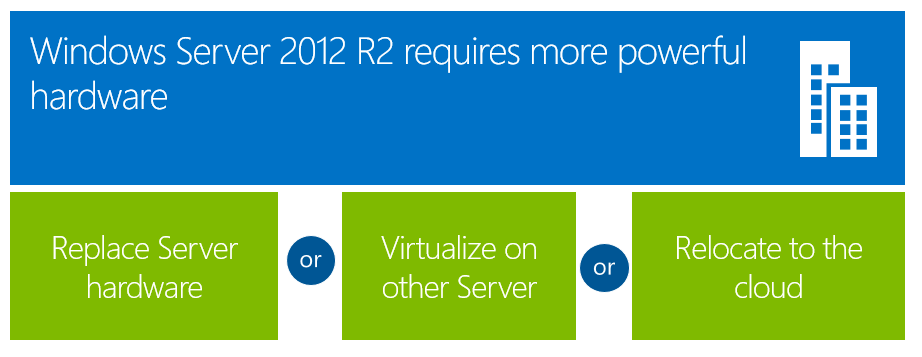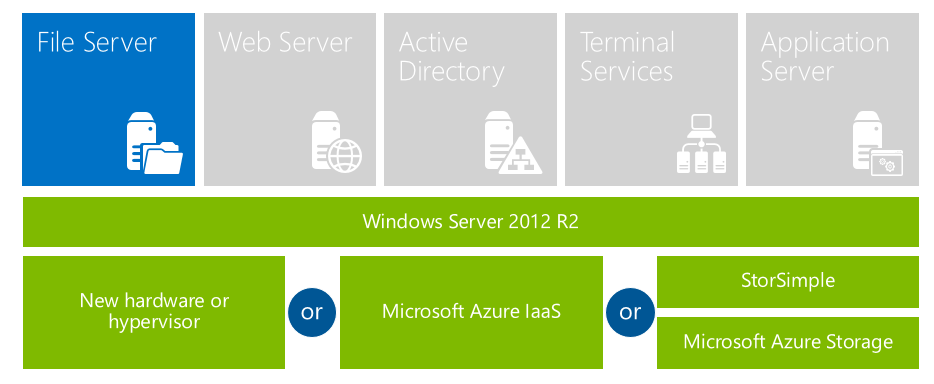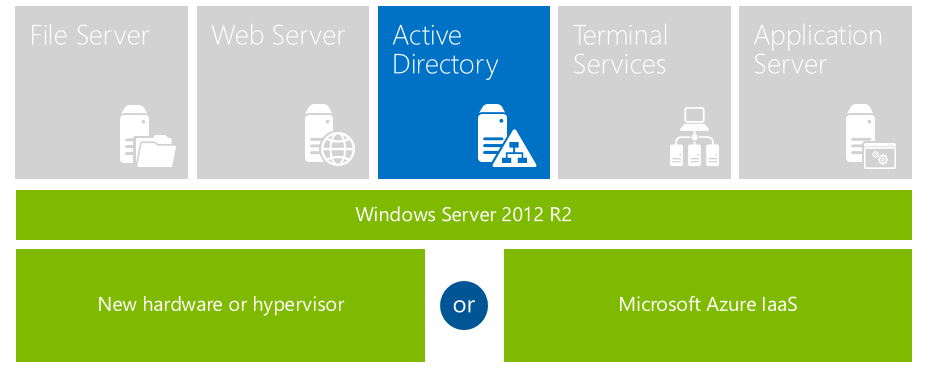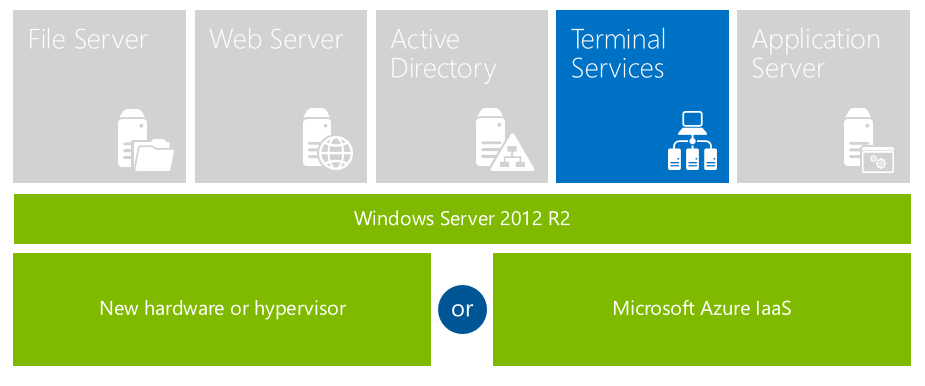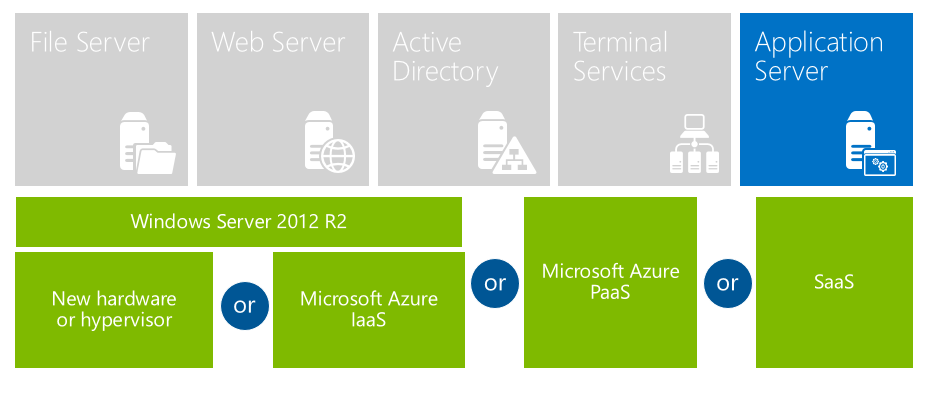Windows Server 2003 End Of Support Part 3c - Target Your Destination - Migrating Windows Server Roles
What options do you have for migrating server roles from Windows Server 2003? The focus for this post will be on migrating to Windows Server 2012 R2, but some other options will also be shown to give an understanding of the different options that are available to you.
If you are not looking at cloud options and want to maintain Windows Server on-premises, some hardware upgrades are likely. Windows Server 2003/R2 instances may be running on older hardware. You should factor purchase lead time for hardware into their migration time estimates for any on-premises upgrades you want to consider.
Windows Server 2012 R2 has the following minimum hardware requirements:
•Processor: 1.4 GHz 64-bit
•RAM: 512 MB
•Disk space: 32 GB
But finding a server on the market today with such low specs is nearly impossible. And most customers will likely want a larger configuration than the minimum. Today’s hardware has capacity far beyond the hardware of 2003, and it’s also more expandable. Having the extra capacity on board or even being able to add it on the fly means being able to add resources like needed memory without having to add additional full machines (which was often the case in 2003). Adding virtualization makes this advantage even more pronounced.
You should also consider virtualization on Hyper-V in your migration plans. Hyper-V virtualization will allow you to more fully utilize hardware investments and will ease management overhead.
There are five key server roles to consider for migration from Windows Server 2003/R2:
•File Server
•Web Server
•Active Directory
•Domain Controller
•Terminal Services
Server roles are the some of the easiest (File Server) and potentially some of the hardest (Active Directory) migration scenarios. Only a thorough analysis of what exists today and what the desired end state is will show exactly what effort is needed to migrate these roles off Windows Server 2003/R2.
For file servers, migrate the data to supported file servers (Windows Server 2012 R2) or to either Azure IaaS or Azure Storage. If you are migrating on-premises and running any hypervisor besides Hyper-V, we recommend a migration to Hyper-V at the same time. Hyper-V is free with Windows Server 2012 R2, and it is a leading enterprise-level hypervisor.
The Cloud OS Network is also an option to consider.
For web servers, migrate to Windows Server 2012 R2 running either on-premises (note the need for new hardware and the possibility of virtualization) or on Azure IaaS. If you are migrating on-premises and running any hypervisor besides Hyper-V, we recommend a migration to Hyper-V at the same time. Hyper-V is free with Windows Server 2012 R2, and it is a leading enterprise-level hypervisor.
The Cloud OS Network is also an option to consider.
You can also migrate to the Azure Web Sites service; this option may offer you the fastest route for migration.
For Active Directory, migrate to Windows Server 2012 R2 running either on-premises (note the need for new hardware and the possibility of virtualization) or on Azure IaaS. If you are migrating on-premises and running any hypervisor besides Hyper-V, we recommend a migration to Hyper-V at the same time. Hyper-V is free with Windows Server 2012 R2, and it is a leading enterprise-level hypervisor.
The Cloud OS Network is also an option to consider.
You should also consider Azure Active Directory and federation or synchronization.
Active Directory has advanced substantially since 2003, and you will need to spend some time planning an Active Directory migration if you are still running Active Directory on a Windows Server 2003/R2 infrastructure.
Terminal Services should be migrated to Windows Server 2012 R2 running either on-premises (note the need for new hardware and the possibility of virtualization) or on Azure IaaS. If you are migrating on-premises and running any hypervisor besides Hyper-V, we recommend a migration to Hyper-V at the same time. Hyper-V is free with Windows Server 2012 R2, and it is a leading enterprise-level hypervisor.
On-premises supports the full Microsoft Virtual Desktop Infrastructure (VDI). Azure supports Session Host running Remote Desktop Services.
The Cloud OS Network is also an option to consider.
Windows Server 2003 may also be acting as a server for your non-Web applications using .NET, Java or native platforms. Migration options start with a straight migration to Windows Server 2012 R2 running physical, virtualized or on Microsoft Azure Virtual Machines IaaS service. Other options include rewriting all or part of the application to take advantage of Microsoft Azure PaaS (Platform as a Service) capabilities or to identify a vendor providing equivalent capabilities in their application offered as a SaaS (Software as a Service) offering.
